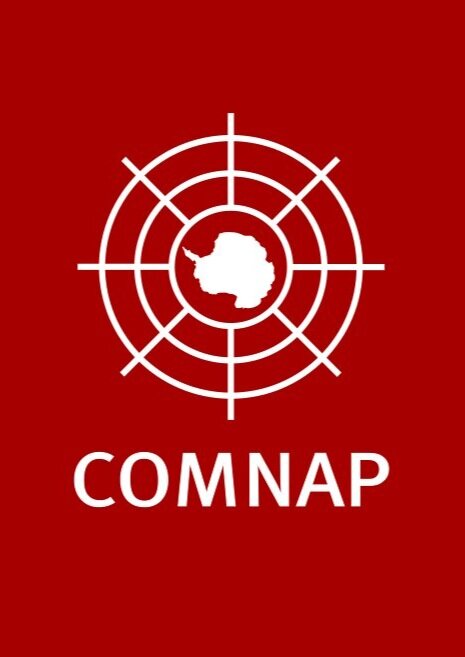
Environmental Protection Expert Group
Expert Group Leader: Andrew Titmus
Oversight EXCOM members: Shaliendra Saini & Walter Mac Cormack
Terms of reference:
Share National Antarctic Program expertise on approaches to minimizing the environmental impacts associated with operations and science support activities.
Review the work of the Antarctic Treaty Consultative Meetings and its Committee for Environmental Protection to identify and engage on developments of relevance to operators.
Identify co-operative programs of scientific, technical and educational value that concern the protection of the Antarctic environment [Madrid Protocol, Article 6].
Understand sources of plastic in the Antarctic environment, support research on this and work towards removal/reduction of introduction of plastics, including micro-plastics, into the environment.
Here are just a few Environmental Protection topics that are particularly important for all national Antarctic programs this season.
Take a look below!
Changing Antarctica and built infrastructure
National Antarctic Programs are considering how a changing Antarctica may impact their built infrastructure, please go to the Protection of the Environment Ambition webpage to see what our Members are doing to leadt by example.
Heightened Risk of Introduction of Highly Pathogenic Avian Influenza (HPAI) in Antarctica
COMNAP has a dedicated project on the heightened risk of introduction of HPAI in Antarctica, please go to the Heightened Risk of HPAI in Antarctica project webpage.
Understanding sources of plastic in the Antarctic
Download a poster here: COMNAP Understanding sources of plastics in the Antarctic Treaty Area
Reducing plastic wastes: national Antarctic programs use macro-plastics in support of science, for operations and logistics in the Antarctic. Often, using plastics make good sense and reduces fuel requirements for shipping since plastics weigh less than alternatives that exist. National Antarctic programs have good macro-plastic waste management and waste return systems in place. Research into micro-plastic distribution show that micro-plastics have been found in the marine area south of 60S.
Four key recommendations for national Antarctic programs are below:
Take Action on Micro-Plastics. Artificial fabrics and personal care products often contain micro-plastics which can enter the marine environment. Educate your expeditioners about this. Ban personal care products that contain micro-plastics from being brought to Antarctica (see list at http://www.beatthemicrobead.org/product-lists/). Investigate ways to prevent micro-plastics from clothing from entering the Antarctic environment-particularly through washing. Perhaps wash clothes less often in Antarctica, use a wash bag, or install filters that capture micro-plastics before they can enter the Antarctic environment.
Do Research and Talk with your Suppliers. Clearly, much of the plastic pollution from in the area south of 60S latitude comes from outside of that area. However, it is not clear from where exactly. Research is the key to understanding sources of plastic pollution and such research should be supported. This includes research into the consumer-drivers for plastics and how we, as consumers, can work with our suppliers to reduce plastics going to Antarctica when possible.
Clean-up Plastic Pollution when Discovered and Record Meta-data. If possible, remove any plastic pollution you discover in the Antarctic environment. But note details of the plastic and record the position where found. Also remember it is important to record areas that are pollution free.
Couple Clean-up Activities and Actions with Research. We need cost-effective responses to reduce plastics of all types entering the Antarctic environment. This requires research, support to the research and feedback into national Antarctic programs procedures.
Plastics-related information
Read the United Nation Environment Programme press release and resolution to end plastic pollution (2 March 2022)
Download the report from the BAS Workshop on plastics: Plastics-in-the-Ocean-Final-Report_11-May-2018
Download a Paper on Microplastics in the Antarctic Marine System Science of the Total Environment 2017
Take a look at the Nordic Environmental Handbook
Read the blog about “Is plastic on your audit plan?”
Download a copy of the EC publication Plastic Waste in the Environment: Plastic Waste in the Environment EC
Download a copy of the ASOC paper to CCAMLR SC-CAMLR XXXVI/BG/29 (16 September 2017): Marine debris
Download a copy of the Greenpeace report Microplastics and persistent flourinated chemicals
Make sure the items you are taking to the Antarctic do not contain micro-plastics: http://www.beatthemicrobead.org/product-lists/
Take a look at IAATO’s Guidelines for Visitors to reduce waste: IAATO Reducing waste visitor guidelines
Download a copy of the ASOC poster on greywater discharge from vessel: Grey water and microplastic pollution
Recent peer-reviewed publications on plastic pollution topic
“Pollution Has No Borders: Microplastics in Antarctica“, Pellegrino, D., La Russa, D., & Barberio, L., (2025), Environments, 12(3), 77
“Microplastics in Antarctica - A plastic legacy in the Antarctic snow?“, Jones-Williams et al., (2025), Science of The Total Environment 966:178543
“Microplastic hotspots mapped across the Southern Ocean reveal areas of potential ecological impact”, Hunter et al, (2024), Nature scientific reports 14:31599
“Recent trends on microplastics abundance and risk assessment in coastal Antarctica: Regional meta-analysis“, Gurumoorthi, K., and Luis, A. J., (2023), Environmental pollution 324:131285
“Anthropogenic microparticles in the emerald rockcod Trematomus bernacchii (Nototheniidae) from the Antarctic”, Bottari et al, (2022), Nature scientific reports 12:17214
“Plastic occurrence, sources, and impacts in Antarctic environment and biota“, Caruso et al., (2022), Water Biology and Security 1:2:100034
“Nanoplastics measurements in Northern and Southern polar ice”, Materić et al, (2022), Environmental Research 208: 112741
“First evidence of microplastics in Antarctic snow”, Aves et al, (2022), The Cryosphere 16 2127–2145
“Microplastics in polar regions: An early warning to the world's pristine ecosystem“, Mishra, A. K., Singh, J., & Mishra, P. P., (2021), Science of The Total Environment 784: 147149
